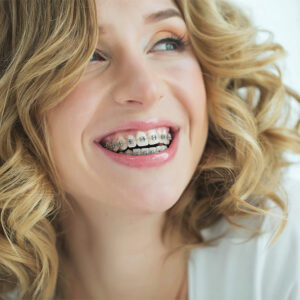
01
A guide to adult braces
Braces are more than just cosmetic treatments as overlapping and misaligned teeth also cause issues like a greater susceptibility to tooth decay, improper bites that lead to facial pain, and more. Getting braces for teeth alignment is a thought that crosses the mind of every adult with misaligned or overlapped teeth. Here we have put together some basic information that might help you make your decision about getting those braces. While the thought of perfectly aligned teeth is appealing, the results of getting adult braces and whether the procedure is worth the cost are some things that might pull you back. Also, although childhood is the ideal time to get any dental correction treatments done, even adult treatments show promising results nowadays. How do braces work? Orthodontics functions on the principle of aligning teeth in the desired position by applying pressure. An orthodontist relies on this principle to achieve the desired results with the help of mechanical devices that put pressure to force the subjected tooth or teeth to reposition. Braces, whether for kids or adults, can be used to reposition multiple teeth at once and are extremely versatile. It is common to experience soreness or discomfort after having braces installed, but the pain can be treated with an over-the-counter pain reliever like ibuprofen. Types of braces For the longest time, people have avoided getting braces because they are afraid of how others will perceive it, and the concern is even greater when it comes to adult braces. While the “metal mouth” is the most common picture of braces that comes to mind, it is not the only option available: Traditional metal braces The regular braces use gentle pressure to realign your teeth over time. These have brackets glued to the teeth and interconnected with a wire, which is tightened every 4-6 weeks, depending on the amount of change desired and the achieved results.
Read More 




